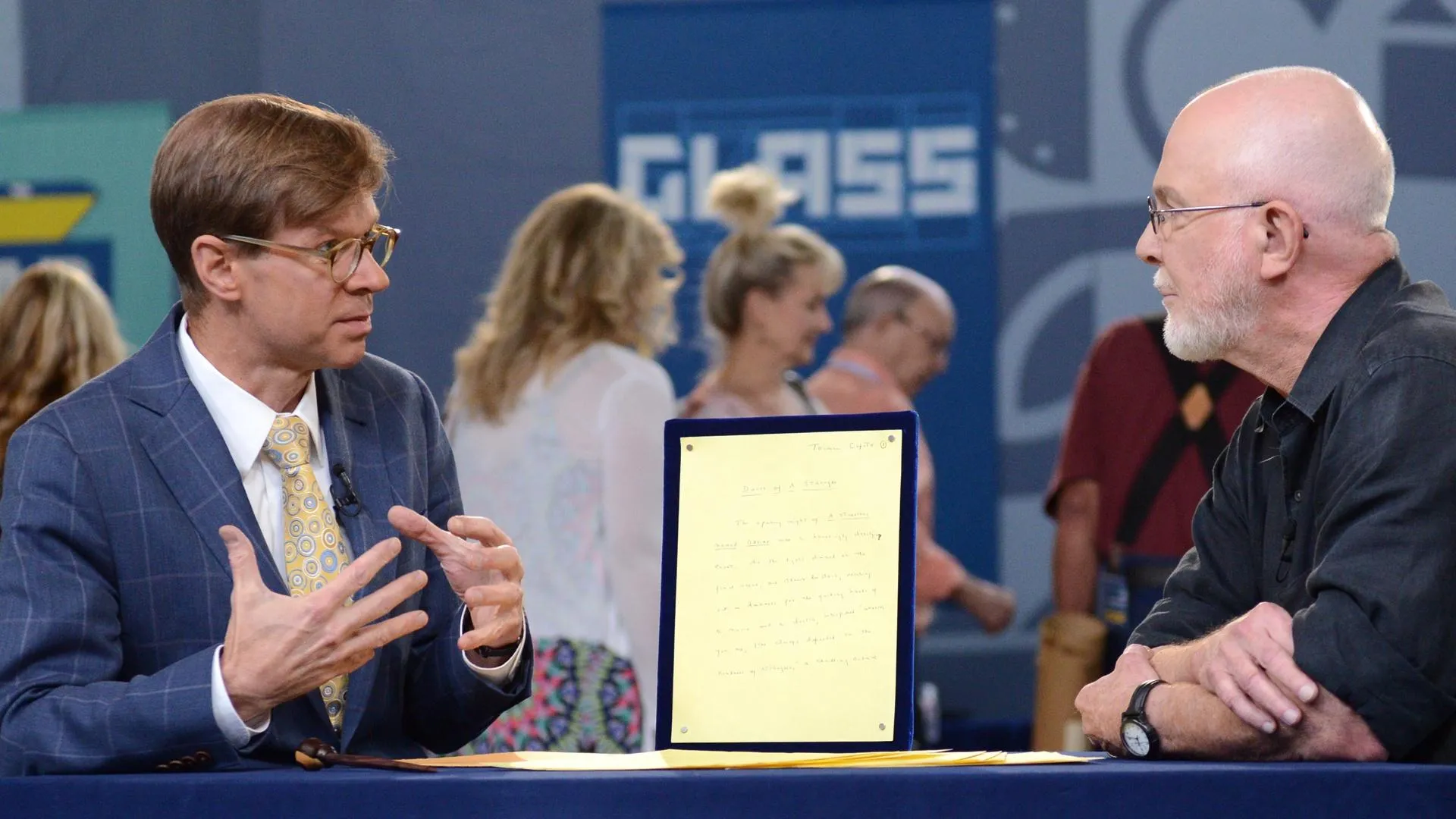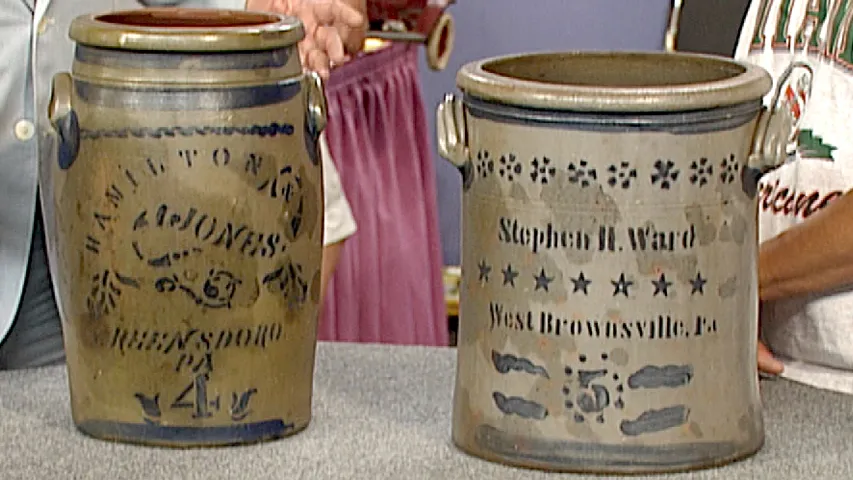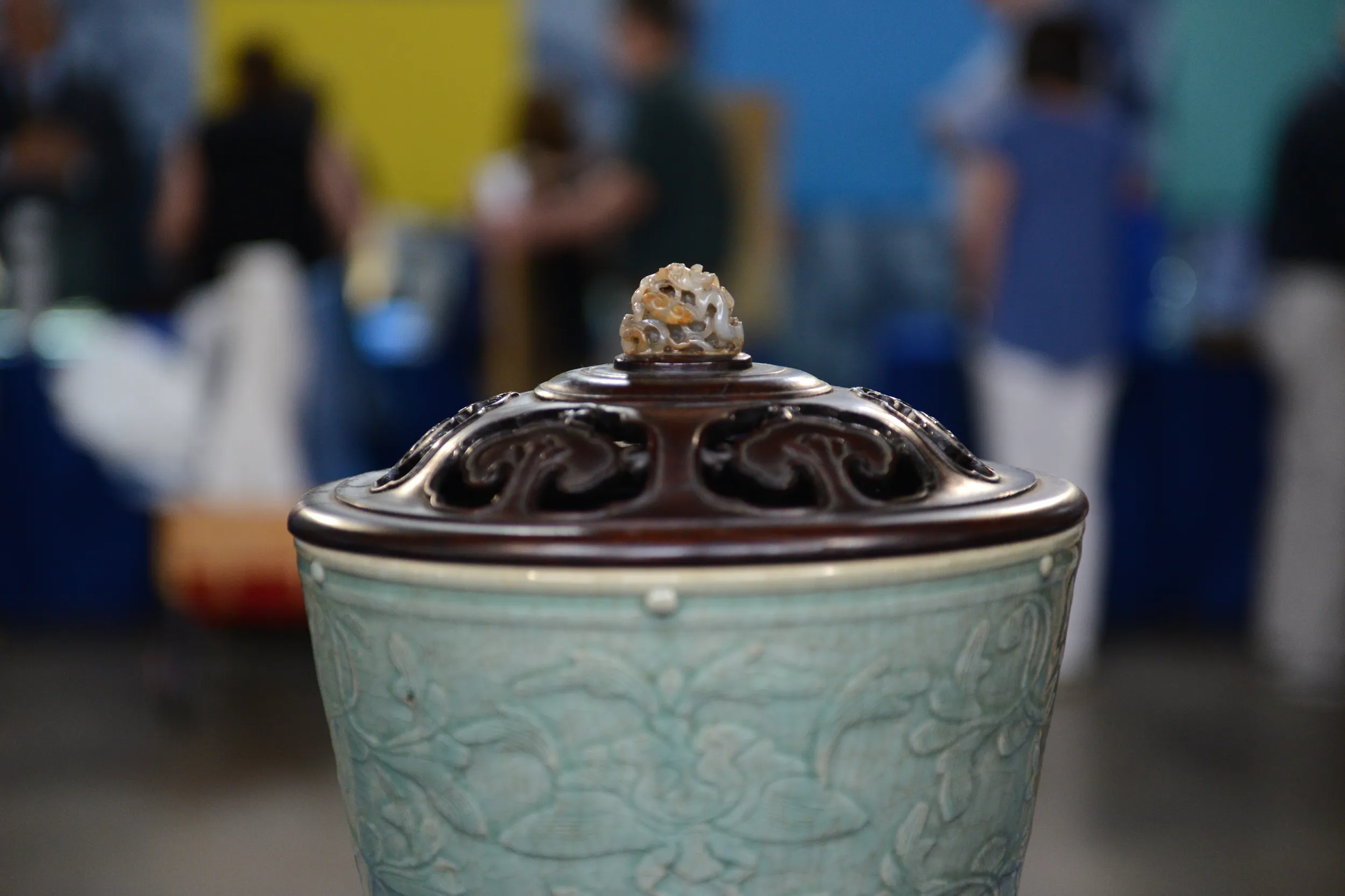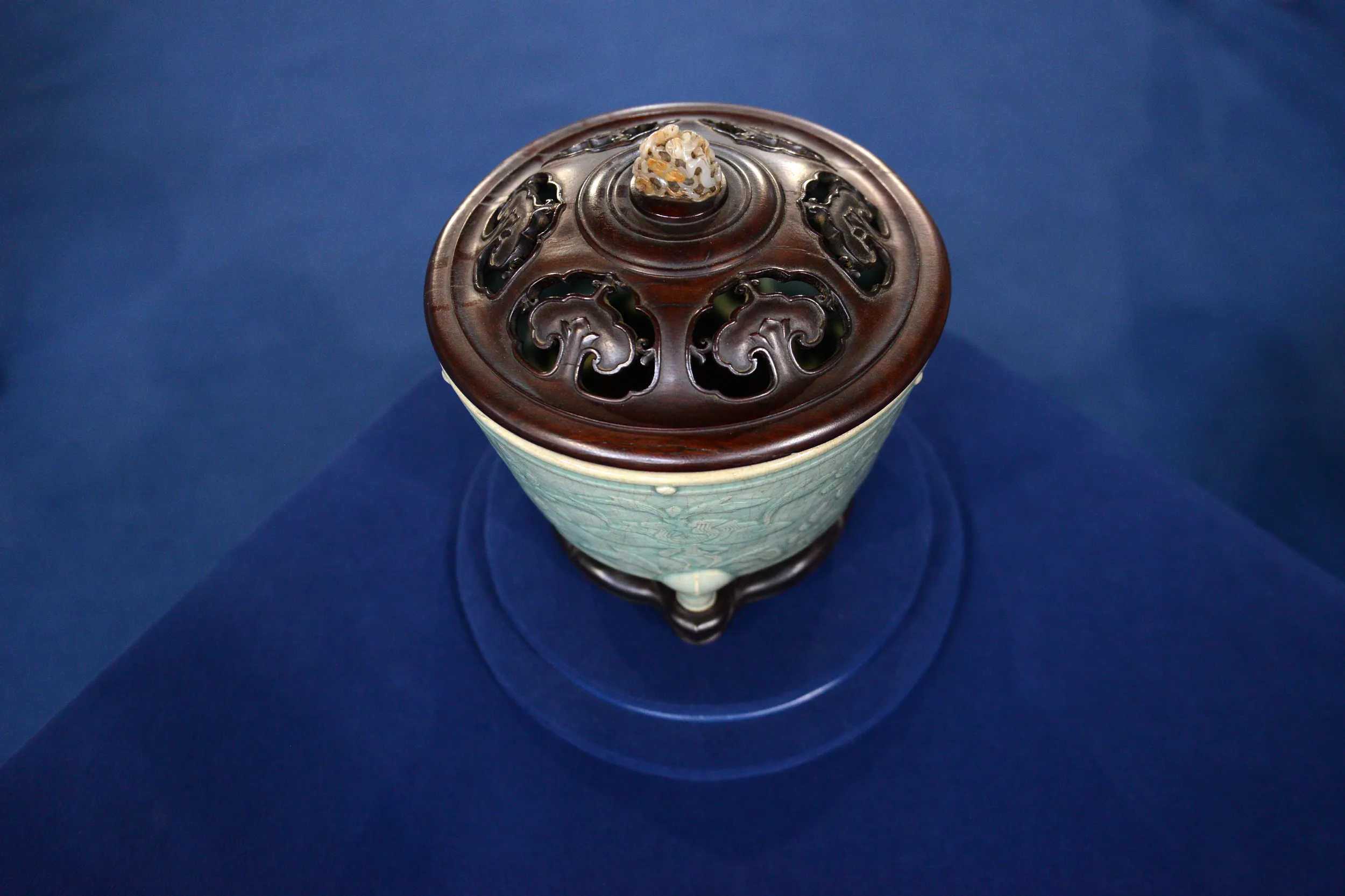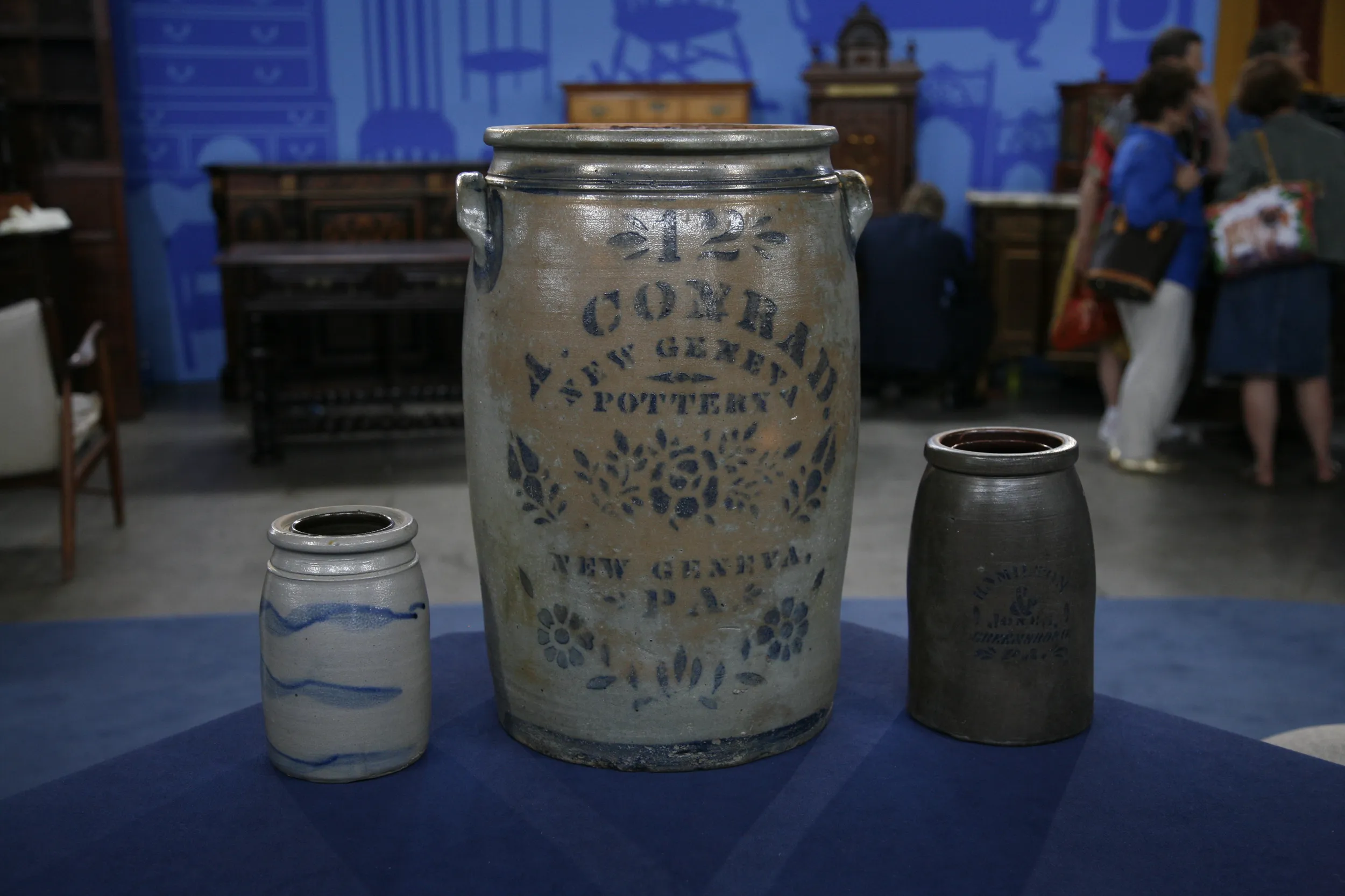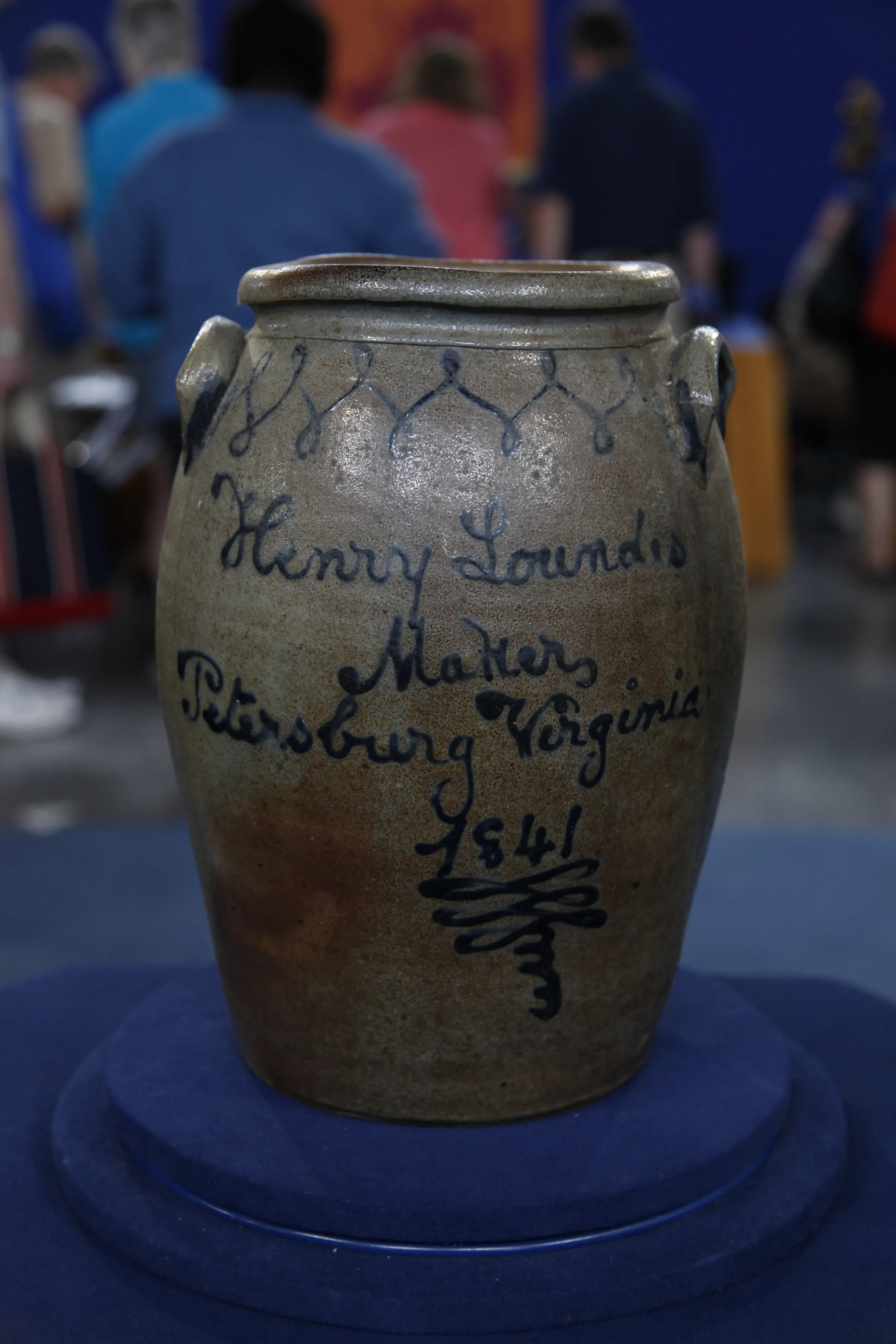GUEST: My mother-in-law collected Asian pottery and Asian plates, and she gave this piece to my husband and I. That's really about all I know about it. I believe it’s-
APPRAISER: Do you know where she got it?
GUEST: I do not, I do not. She traveled a lot and she collected things wherever. She bought them at different estate sales, and wherever she would come across them.
APPRAISER: Do you have any idea how old this is?
GUEST: No, I don't.
APPRAISER: Well, the top and the bottom, the lid here and the stand, those are 18th century.
GUEST: Okay.
APPRAISER: Probably during the Ch'ien-Lung reign, they were made between like 1736 and 1796. The jade finial on the top is Ming period, which is 1368 to 1644. But the piece it's enclosing is Longquan celadon, and this piece was made in, probably, in the 13th century. Okay. Around 1250 or so, and one of the things about it is, it's of the best color for Longquan, it's that... they call it kingfisher's feather color, that bluish green color
GUEST: Yes, yes.
APPRAISER: And the decoration is mallow flowers that are on it. And it would have been filled with sand.
GUEST: Filled with sand? Wow.
APPRAISER: Yeah, and they would burn the incense on the sand.
GUEST: Okay, interesting.
APPRAISER: This is what the Chinese call hongmu, red wood. The carvings here are a thing called ruyi, and the words ruyi in Chinese mean "as you wish."
GUEST: Okay.
APPRAISER: It's an emblem that you're hospitable and receptive to people. The wood was probably a hundred years old by the time this was made.
GUEST: Oh, wow.
APPRAISER: You know, in the 18th century. But magnificent. This is carved like a lotus pad, the base. This is a celadon stoneware that this material is made out of, virtually porcelain, but just a little less fired than that.
GUEST: Okay.
APPRAISER: A really lively carving.
GUEST: It is.
APPRAISER: It does have some condition problems. It has a few hairline cracks, but that's more or less to be expected on something that's this age. But the presentation is really magnificent on this thing. In its present condition, at auction, we would expect this to sell between $8,000 to $10,000.
GUEST: Okay, wow.
APPRAISER: And it's just a wonderful piece, absolutely typical Longquan.
GUEST: Wonderful.
APPRAISER: Really fine quality.
GUEST: Yes, well, she'll be delighted to know.

